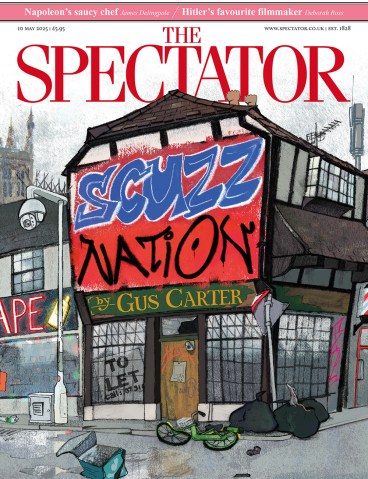
Hannah Moore has narrated this article for you to listen to.
I spent my childhood being ferried around in my mom’s minivan, a hunter green Ford Windstar. Compared with most family cars on the road today, it was like Air Force One: magisterial and bigger than was strictly necessary. I loved that minivan. It was roomy and comfortable, with a two-seater half-bench in the middle row to allow access to the full three-seater third row.
The Windstar saw my two sisters and me through our primary years, to twice-weekly basketball and volleyball practice. In the summer, we would head to the lake, all the kit housed neatly in the back. Apart from the handful of times I threw up in the back seat, my memories of that van are happy ones.
The ‘multi-purpose vehicle’ (MPV) was commonplace in my millennial childhood. Most families had one – and I fondly remember it as a ‘mom van’. But then, that was the American West, where the average street is wider than a four-lane motorway in Europe.
I live in Britain now, and the age of the mom van is over, if it had ever begun. This is the age of the SUV. For reasons unclear, British drivers are besotted with them. Most family vehicles fit into this category, with the shape of a Land Rover but the soft trim and appeal of a ‘family car’. They are sold as such; in every article titled ‘Best Family seven-seaters’ (and I have read all of them), SUVs top the list. MPVs don’t feature.
With baby number three on the way, I have spent weeks studying the range of family SUVs. Initially I settled on the 2021 Hyundai Santa Fe, but when I went to see one in person, I was shocked by the impracticality of it. It was essentially unusable for a family of five. The middle row only fits two car seats, and the two rear seats are so tiny even my six-year-old would struggle to fit. Factor in her booster seat and it’s impossible.
What’s more, the third row is blocked by the middle one, and when I asked the salesman how a person is supposed to get back there with two child seats in the way, he shrugged and said: ‘You could climb in via the back.’ I imagined myself on a sodden morning six months from now, dragging out the pram and the nappy bag from the boot so my eldest could tramp her muddy feet all over as she clambered into the back.
Why design a seven-seater that can neither comfortably carry seven nor any reasonable amount of kit?
The space itself is awful. Just looking at it makes me nauseous, with its tiny portholes for windows and no air vents. I’d rather be in a dog crate. At least you’d have air flow. ‘It has a huge boot,’ said the salesman, ‘with all the seats down.’ But when is a mother of three going to be travelling with no passengers?
With both rear rows in use, the boot resembles a large briefcase. It couldn’t fit more than two modestly filled grocery bags. I will soon be toting a pram, a baby seat, two boosters, two school bags and a nappy bag as a bare minimum. Not one affordable seven-seater SUV on the market will do the job.
The Santa Fe’s competitors are worse. Skoda trumpets the fact that its Kodiaq has a bigger boot than the Hyundai’s, but with the seats up you’re left with 340 litres. That’s smaller than the boot of VW Polo hatchback. What is the point? Why design a seven-seater that can neither comfortably carry seven people nor any reasonable amount of kit?
A handful of the seven-seater SUVs sold as family vehicles have not even been crash-tested for child seats in the third row, or in the middle seat of the second. That leaves only two child-friendly seats, if you exclude the front passenger. For a mother of three plus, this rules these vehicles out entirely. Like the 4x4s they’re modelled on, the family SUV is designed for off-roading, not for transporting babies. ‘Sports Utility Vehicle’: the clue is in the name.

People wonder why Britain’s population is in decline but consider the logistical obstacles large families face: without a big enough car, we are effectively prevented from taking part in everyday life. Older relatives remind me that, back in their day, parents just shoved the kids in the back of the old banger when they needed to. But a generation ago, large families didn’t travel much. They didn’t have swimming lessons to get to, or football on the weekends.
Which is why I still believe that MPVs are the only sensible option. The Volkswagen Touran has five Isofix points for affixing car seats, so the kids can fit easily anywhere except the driver’s seat. The Volkswagen Sharan and the Seat Alhambra are even bigger and – bonus – come with sliding doors. But those were discontinued five years ago (to make room for ‘newer, cleaner models’, says VW). If you want a low mileage Alhambra, you’re running out of time to buy one.
I know diesel isn’t the way forward. I hate diesel. I owned a used diesel VW Sharan which I bought four years ago in anticipation of having more than two children. But it broke down irrevocably on a trip to Wales, on the M40 outside Leamington Spa. I didn’t drive it hard enough to burn off the fumes, and the filter clogged. But mums don’t need high-powered diesel engines. They just need a car big enough to ferry their kids around.
If you’re looking for a petrol or hybrid minivan your choices shrink to about three. The Ford S-Max is popular but scores poorly in some reliability tests (Car Expert gives the 2015-2024 model a rating of just 28 per cent and, according to a 2022 Carbuyer report, 21 per cent of owners reported a fault in the first year of ownership, with an average repair bill of more than £900). The Citroën Grand C4 Picasso is large and comfortable, but it’s French, so also a no. The only affordable petrol minivan with top safety features is the Touran, which could be described as ‘unstylish’. But I don’t care. It ticks all the boxes, and it’s the only one that does.
I rang my local Volkswagen dealership asking to test-drive a Touran and the salesman who answered laughed and said: ‘Good luck finding one of those.’ I asked why and he confirmed my suspicions: ‘No one wants an MPV any more. Everyone who might have bought one ten years ago buys an SUV.’
And so my search for a mom van continues. I will spend the time before my third child arrives scouring Autotrader and every dealership within a hundred miles for the holy grail: a seven-seater that actually seats seven. If you don’t have three or more kids, you may not mourn the death of the MPV. But as I cross the threshold from two to three, I certainly do.








Comments